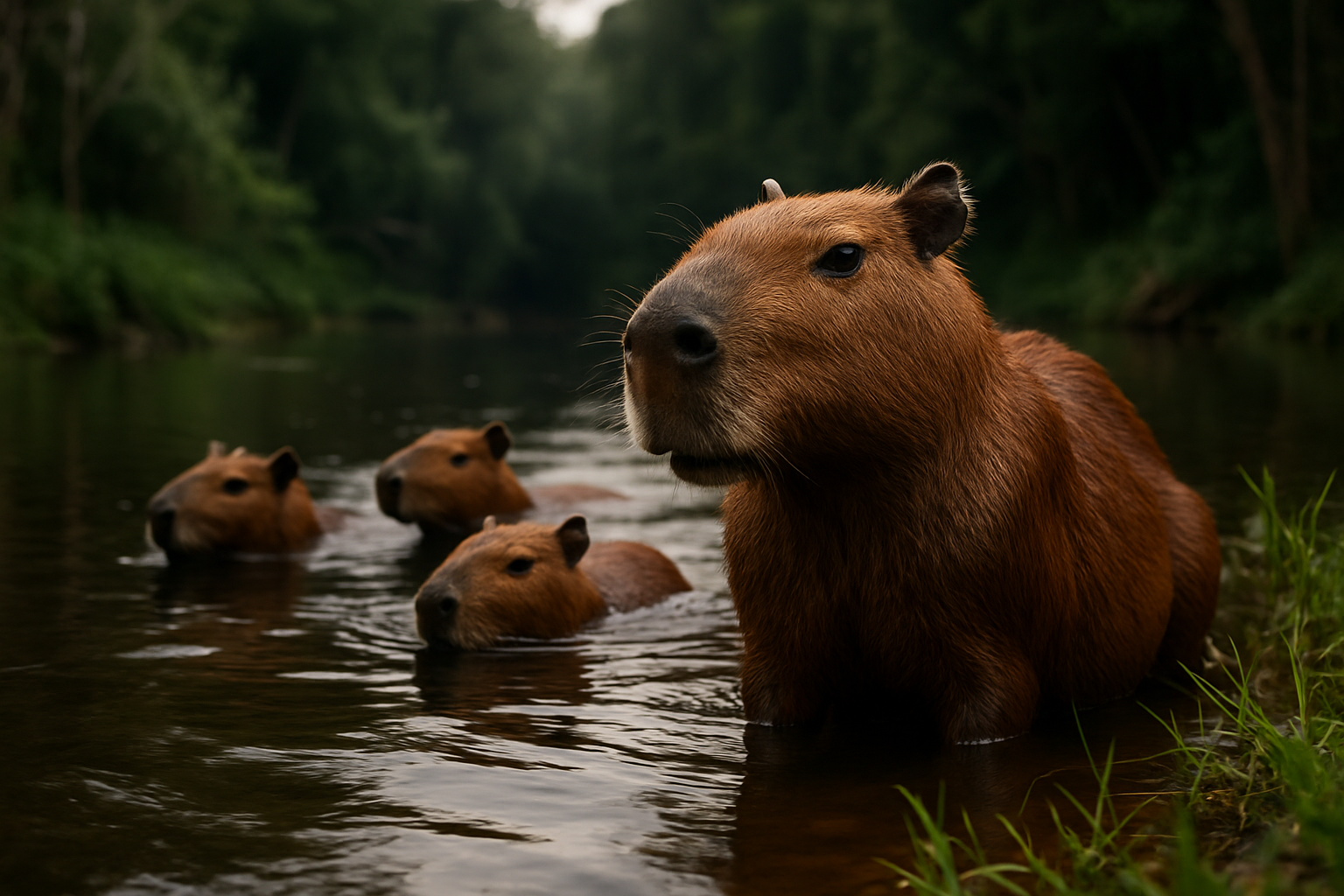Capybaras: The Gentle Giants of South America's Waterways
Introducing the capybara, a remarkable creature that blends charm and ecological importance. These oversized rodents, native to South America, have captured hearts worldwide with their docile nature and unique adaptations. From their semi-aquatic lifestyle to their role in their ecosystems, capybaras offer a fascinating glimpse into the diversity of mammalian life. This article delves into the world of capybaras, exploring their biology, behavior, and the growing interest in these animals as unconventional pets.

The capybara’s adaptation to aquatic environments is evident in their physical characteristics. Their eyes, ears, and nostrils are positioned high on their heads, allowing them to remain mostly submerged while still being aware of their surroundings. This unique feature enables them to stay hidden from potential threats while keeping cool in the tropical heat.
Capybara Biology and Behavior
Weighing up to 150 pounds and measuring about 4 feet in length, capybaras hold the title of the world’s largest rodent. Their barrel-shaped bodies are covered in coarse, brown fur that provides camouflage in their marshy habitats. Webbed feet make them excellent swimmers, capable of staying submerged for up to five minutes.
Capybaras are highly social animals, often living in groups of 10 to 20 individuals, though larger herds of up to 100 have been observed during the dry season. This social structure offers protection from predators and facilitates complex communication through vocalizations, scent marking, and body language.
Their diet consists primarily of grasses and aquatic plants, but they are known to occasionally consume their own feces to extract maximum nutrition from their food. This behavior, known as coprophagy, is common among many herbivorous animals and helps capybaras maintain a healthy gut microbiome.
Ecological Role and Conservation Status
Capybaras play a crucial role in their ecosystems as grazers and prey animals. Their feeding habits help maintain the balance of plant life in wetland areas, preventing overgrowth and promoting biodiversity. Additionally, their droppings serve as a valuable nutrient source for aquatic ecosystems.
While capybaras are not currently considered endangered, they face threats from habitat loss due to agricultural expansion and urban development. In some areas, they are hunted for their meat and leather. Conservation efforts focus on protecting wetland habitats and promoting sustainable management practices to ensure the long-term survival of capybara populations.
Capybaras in Human Culture
The capybara’s gentle demeanor and unique appearance have made them popular figures in human culture. In Japan, they have become unexpected mascots, featured in various forms of media and merchandise. This cultural fascination has led to the creation of capybara-themed cafes, where visitors can observe and sometimes interact with these charming creatures.
In their native South America, capybaras have long been a part of local traditions and cuisine. In Venezuela, for example, capybara meat is considered a delicacy and is traditionally consumed during Lent. This cultural significance highlights the complex relationship between humans and wildlife in the region.
The Rise of Capybaras as Exotic Pets
In recent years, there has been a growing trend of keeping capybaras as exotic pets, particularly in the United States. While their docile nature and intelligence make them appealing to some, potential owners must consider the significant challenges and responsibilities of caring for these large, semi-aquatic animals.
Capybaras require spacious enclosures with access to water for swimming, a specialized diet, and regular veterinary care. The estimated cost of owning a capybara can range from $5,000 to $10,000 per year, not including initial setup costs. Additionally, many jurisdictions have strict regulations or outright bans on keeping capybaras as pets due to concerns about animal welfare and potential ecological impact if released.
The exotic pet trade has raised ethical concerns among conservationists and animal welfare advocates. Critics argue that keeping capybaras as pets can lead to inadequate care, stress for the animals, and potentially contribute to the illegal wildlife trade. Supporters, however, claim that responsible ownership can raise awareness about these unique animals and contribute to conservation efforts.
Conclusion: Understanding and Appreciating Capybaras
Capybaras represent a fascinating example of nature’s diversity and adaptability. Their unique characteristics and ecological importance make them valuable subjects for scientific study and conservation efforts. As interest in these animals grows, it becomes increasingly important to balance human fascination with the need to protect and preserve capybaras in their natural habitats.
Whether observed in the wild, admired from afar, or carefully managed in appropriate settings, capybaras continue to captivate and intrigue. By deepening our understanding of these remarkable creatures, we can better appreciate the complex web of life in South American ecosystems and the importance of preserving biodiversity for future generations.





